Ian Jarvis's Blog, page 4
January 8, 2017
THE GAME'S AFOOT, WATSON, OR POSSIBLY THIRTEEN INCHES.
 Just as every fan has their preferred James Bond or Doctor Who actor, everyone has a favourite Sherlock Holmes. Although Jeremy Brett was definitely the best and most accurate portrayal of Conan Doyle's character, I’ve always had a huge love for Basil Rathbone. With the brilliant Nigel Bruce as Watson (anyone else would be unthinkable) he played Holmes fourteen times onscreen between 1939 and 1946 and every film is still a nostalgic treat. It was also one of the few times Rathbone got to play the hero. In most dramas he was cast as the suave, handsome villain, often dying in a final sword fight, most memorably at the hands of Errol Flynn’s Robin Hood.
Just as every fan has their preferred James Bond or Doctor Who actor, everyone has a favourite Sherlock Holmes. Although Jeremy Brett was definitely the best and most accurate portrayal of Conan Doyle's character, I’ve always had a huge love for Basil Rathbone. With the brilliant Nigel Bruce as Watson (anyone else would be unthinkable) he played Holmes fourteen times onscreen between 1939 and 1946 and every film is still a nostalgic treat. It was also one of the few times Rathbone got to play the hero. In most dramas he was cast as the suave, handsome villain, often dying in a final sword fight, most memorably at the hands of Errol Flynn’s Robin Hood.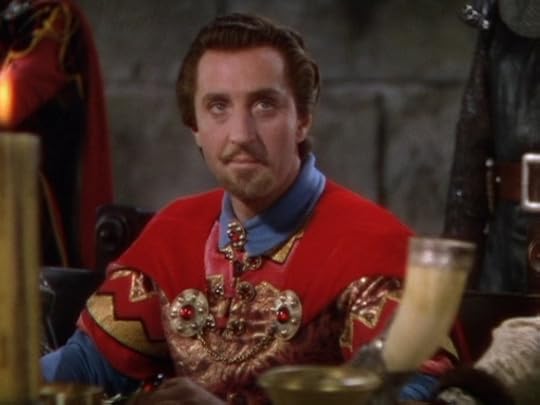
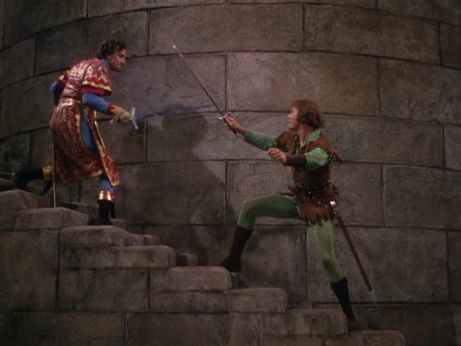 Only the first two Sherlock Holmes films with Rathbone are set in Victorian England. With the war raging all around, the studio decided to use the detective as a propaganda tool and the stories were rewritten and brought into the modern day, where Holmes could foil Nazi spy plots and keep England and America safe. It isn't difficult to guess which side Moriarty was fighting for.
Only the first two Sherlock Holmes films with Rathbone are set in Victorian England. With the war raging all around, the studio decided to use the detective as a propaganda tool and the stories were rewritten and brought into the modern day, where Holmes could foil Nazi spy plots and keep England and America safe. It isn't difficult to guess which side Moriarty was fighting for. Nigel Bruce's Doctor Watson grows progressively dafter during the film series, and quite why the genius Holmes would have him as an assistant is a greater mystery than the cryptic puzzles he attempts to solve. This Watson would be the ideal guest to invite over at Christmas - a lovely, kindly old uncle, all bumbling and silly - but he probably wouldn’t be your first choice as an ally when going up against Moriarty or hell hounds on Dartmoor. Thankfully, Rathbone doesn’t share these doubts and the inseparable pair are absolutely wonderful together.Captain Kirk never said ‘Beam me up, Scotty,’ and most people are aware that Holmes never said ‘Elementary, my dear Watson,’ in any of the books or films. Over the past few weeks, however, I’ve been playing on this line with a series of Facebook posts to promote my novel Cat Flap. These follow at the end of the blog.
Nigel Bruce's Doctor Watson grows progressively dafter during the film series, and quite why the genius Holmes would have him as an assistant is a greater mystery than the cryptic puzzles he attempts to solve. This Watson would be the ideal guest to invite over at Christmas - a lovely, kindly old uncle, all bumbling and silly - but he probably wouldn’t be your first choice as an ally when going up against Moriarty or hell hounds on Dartmoor. Thankfully, Rathbone doesn’t share these doubts and the inseparable pair are absolutely wonderful together.Captain Kirk never said ‘Beam me up, Scotty,’ and most people are aware that Holmes never said ‘Elementary, my dear Watson,’ in any of the books or films. Over the past few weeks, however, I’ve been playing on this line with a series of Facebook posts to promote my novel Cat Flap. These follow at the end of the blog. Published by MX Publishing on the first of February, Cat Flap is the first in a series of humorous detective novels chronicling the exploits of eccentric private investigator Bernie Quist. Based in York, Quist is a contemporary Sherlock Holmes. His methods, looks and personality are remarkably similar to the celebrated Victorian sleuth and his assistant is named Watson, although this Watson is a black youth from the notorious Grimpen housing estate and he's definitely no doctor. The pair tackle bizarre cases which invariably lead them into the murky realms of the supernatural, a world the secretive Quist is only too familiar with.Elementary, my dear Watson...
Published by MX Publishing on the first of February, Cat Flap is the first in a series of humorous detective novels chronicling the exploits of eccentric private investigator Bernie Quist. Based in York, Quist is a contemporary Sherlock Holmes. His methods, looks and personality are remarkably similar to the celebrated Victorian sleuth and his assistant is named Watson, although this Watson is a black youth from the notorious Grimpen housing estate and he's definitely no doctor. The pair tackle bizarre cases which invariably lead them into the murky realms of the supernatural, a world the secretive Quist is only too familiar with.Elementary, my dear Watson...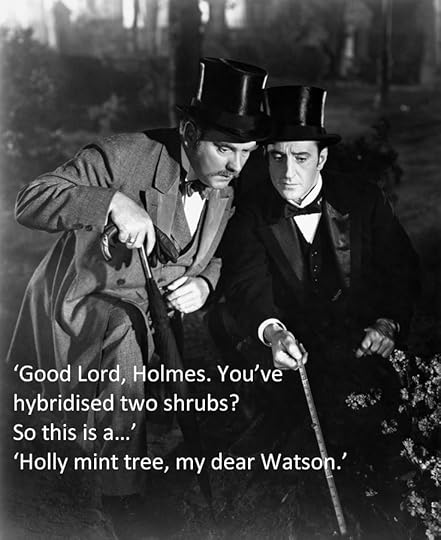

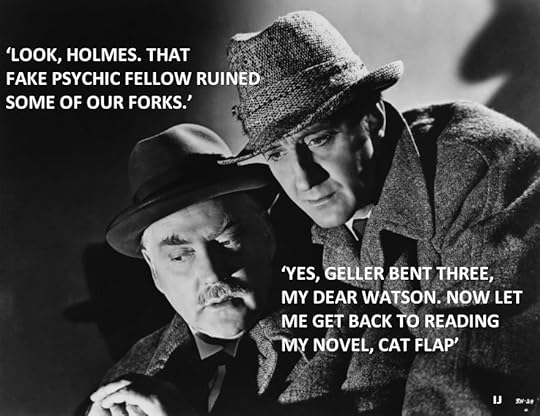
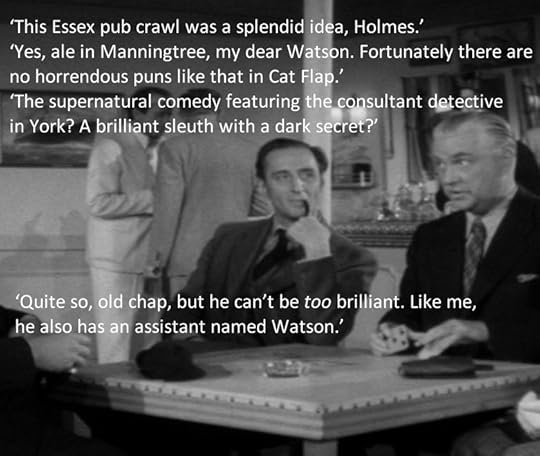



Published on January 08, 2017 02:39
October 27, 2016
Sherlock in a Flap?
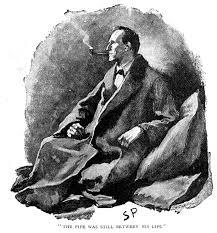 Sherlock Holmes appeared in 1887 in the book A Study in Scarlet and the world has been fascinated by Arthur Conan Doyle’s creation ever since. We’re all familiar with his appearance thanks to the wonderful artwork of Sidney Paget. His Victorian pictures illustrated the detective’s adventures in the Strand Magazine and he brought the literary description to iconic life with the aquiline nose and a high forehead to rival Anthony McPartlin of Ant and Dec.
Sherlock Holmes appeared in 1887 in the book A Study in Scarlet and the world has been fascinated by Arthur Conan Doyle’s creation ever since. We’re all familiar with his appearance thanks to the wonderful artwork of Sidney Paget. His Victorian pictures illustrated the detective’s adventures in the Strand Magazine and he brought the literary description to iconic life with the aquiline nose and a high forehead to rival Anthony McPartlin of Ant and Dec. William Gillette was the first actor to play him, over 1300 times on stage, and he cemented the image of deerstalker hat, magnifying glass, violin and curved calabash pipe. In the books, Holmes smoked a simple briar pipe, but the actor felt this obscured his mouth and adopted the elaborate curved pipe instead. Later actors maintained this image on film through the decades, including the superb Jeremy Brett, Peter Cushing and my personal favourite Basil Rathbone. It’s a tribute to the enduring love of Holmes that he’s been portrayed on screen over 250 times, with around 100 actors having now played him.
William Gillette was the first actor to play him, over 1300 times on stage, and he cemented the image of deerstalker hat, magnifying glass, violin and curved calabash pipe. In the books, Holmes smoked a simple briar pipe, but the actor felt this obscured his mouth and adopted the elaborate curved pipe instead. Later actors maintained this image on film through the decades, including the superb Jeremy Brett, Peter Cushing and my personal favourite Basil Rathbone. It’s a tribute to the enduring love of Holmes that he’s been portrayed on screen over 250 times, with around 100 actors having now played him. We also see Holmes in many other incarnations, such as private detectives and screen characters like the Mentalist. He’s recently been updated too in the amazing Sherlock series with Benedict Cumberbatch. With all this in mind, I decided to try a new take on the character with Bernie Quist. This is a different and original approach and hopefully mystery readers and Holmes fans will enjoy it. Quist, his assistant and the other protagonists are likable and quirky, and the stories are humorous without being outright comedy.
We also see Holmes in many other incarnations, such as private detectives and screen characters like the Mentalist. He’s recently been updated too in the amazing Sherlock series with Benedict Cumberbatch. With all this in mind, I decided to try a new take on the character with Bernie Quist. This is a different and original approach and hopefully mystery readers and Holmes fans will enjoy it. Quist, his assistant and the other protagonists are likable and quirky, and the stories are humorous without being outright comedy. It’s easy to see why the Hound of the Baskervilles is the most famous and best loved of Conan Doyle’s stories. It’s a truly fantastic novel. Readers get their favourite detective involved in a seemingly supernatural mystery of ancient legends, misty moorlands and a terrifying spectral beast. A similar atmosphere permeates the Quist novels, but where the Baskerville hound turns out to be a real dog similar to the ones owned by drug dealers on estates, the eerie situations Quist faces are genuinely paranormal.
It’s easy to see why the Hound of the Baskervilles is the most famous and best loved of Conan Doyle’s stories. It’s a truly fantastic novel. Readers get their favourite detective involved in a seemingly supernatural mystery of ancient legends, misty moorlands and a terrifying spectral beast. A similar atmosphere permeates the Quist novels, but where the Baskerville hound turns out to be a real dog similar to the ones owned by drug dealers on estates, the eerie situations Quist faces are genuinely paranormal. A contemporary Holmes, Quist is a consultant detective operating from Baker Avenue in the city of York. His looks, eccentric personality and deductive methods resemble Doyle's sleuth and his assistant is named Watson, although this Watson is a black youth from the notorious Grimpen housing estate and he’s definitely no doctor. The oddly mismatched pair take on bizarre cases which invariably lead to the shadowy world of the supernatural, a world the mysterious Quist is all too familiar with. Reclusive and very much a loner, the consultant detective has a dark secret which eventually comes to light in the first novel Cat Flap.
A contemporary Holmes, Quist is a consultant detective operating from Baker Avenue in the city of York. His looks, eccentric personality and deductive methods resemble Doyle's sleuth and his assistant is named Watson, although this Watson is a black youth from the notorious Grimpen housing estate and he’s definitely no doctor. The oddly mismatched pair take on bizarre cases which invariably lead to the shadowy world of the supernatural, a world the mysterious Quist is all too familiar with. Reclusive and very much a loner, the consultant detective has a dark secret which eventually comes to light in the first novel Cat Flap. Cat Flap begins days before Christmas and once again, the sleuth will be quietly celebrating alone. His new assistant has other ideas, mostly involving parties, girls and beer, but Yuletide plans are halted when three York chemists die and the fiancé of one hires the pair to look into her apparent suicide. After discovering the chemist wasn’t engaged, they’re drawn into the mystery when their employer is killed. Added to this, Watson has a puzzle of his own - Quist is clearly hiding something and he’s curious to know what. The investigation leads to a shady cartel of northern businessmen, a forgotten Egyptian cult and an ancient evil lurking in the old alleyways of York.Quist’s secret is also revealed, and Watson doesn’t know what terrifies him the most.Beginning as a murder investigation, Cat Flap soon develops into a paranormal thriller, set against a backdrop of Manchester and York, a beautiful city of historic buildings and medieval fortifications that has seldom been used by mystery writers.Cat Flap is published by MX Publishing on the first of February and will be the start of a series. Assuming, of course, that Quist and Watson survive their first adventure, the second book, the Music of Sound, revolves around the British music industry, an enigmatic pop star, the Titanic and voodoo.
Cat Flap begins days before Christmas and once again, the sleuth will be quietly celebrating alone. His new assistant has other ideas, mostly involving parties, girls and beer, but Yuletide plans are halted when three York chemists die and the fiancé of one hires the pair to look into her apparent suicide. After discovering the chemist wasn’t engaged, they’re drawn into the mystery when their employer is killed. Added to this, Watson has a puzzle of his own - Quist is clearly hiding something and he’s curious to know what. The investigation leads to a shady cartel of northern businessmen, a forgotten Egyptian cult and an ancient evil lurking in the old alleyways of York.Quist’s secret is also revealed, and Watson doesn’t know what terrifies him the most.Beginning as a murder investigation, Cat Flap soon develops into a paranormal thriller, set against a backdrop of Manchester and York, a beautiful city of historic buildings and medieval fortifications that has seldom been used by mystery writers.Cat Flap is published by MX Publishing on the first of February and will be the start of a series. Assuming, of course, that Quist and Watson survive their first adventure, the second book, the Music of Sound, revolves around the British music industry, an enigmatic pop star, the Titanic and voodoo.
Published on October 27, 2016 11:47
October 7, 2016
LOCATION COUNT
A pictorial look at where Bram Stoker wrote Dracula. Some of the places that inspired him and locations where he set scenes. Bram Stoker never visited Transylvania, but from 1894 he did holiday in Aberdeenshire on the eastern coast of Scotland, staying mostly at the Kilmarnock Arms Hotel in Cruden Bay. The first picture is the hotel in Stoker's time. Nothing much has changed.
Bram Stoker never visited Transylvania, but from 1894 he did holiday in Aberdeenshire on the eastern coast of Scotland, staying mostly at the Kilmarnock Arms Hotel in Cruden Bay. The first picture is the hotel in Stoker's time. Nothing much has changed.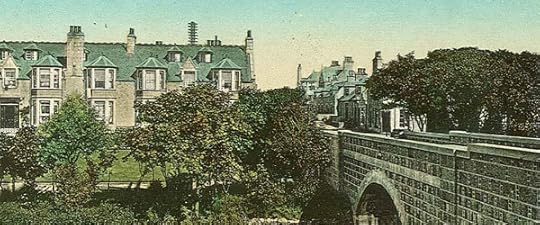
 Isolated and windswept, Slains Castle stands on the headland above the village and Stoker was a guest here, following in the literary footsteps of Johnson and Boswell who stayed at the castle in 1773.
Isolated and windswept, Slains Castle stands on the headland above the village and Stoker was a guest here, following in the literary footsteps of Johnson and Boswell who stayed at the castle in 1773.
 Begun in 1597, the place is a curious hotchpotch of periods, the final 1837 remodelling being in the Scottish Baronial style. Slains was the inspiration for the Count’s castle at the head of the Borgo Pass, and Cruden Bay today’s residents refer to it as Castle Dracula. Now a romantic clifftop ruin, with many stone chambers and passageways to explore, it’s well worth a visit.
Begun in 1597, the place is a curious hotchpotch of periods, the final 1837 remodelling being in the Scottish Baronial style. Slains was the inspiration for the Count’s castle at the head of the Borgo Pass, and Cruden Bay today’s residents refer to it as Castle Dracula. Now a romantic clifftop ruin, with many stone chambers and passageways to explore, it’s well worth a visit. Whitby was the setting for many scenes in Dracula and Stoker first visited the small Yorkshire fishing town in 1890. He stayed for several weeks on the West Cliff’s Royal Crescent at number 6, a guesthouse run by Mrs. Emma Veazey. This is the cream-coloured house in the second picture. A plaque is now fixed to the wall and the place has been named Bram's View. The current owner lets out his rooms as a holiday flat.
Whitby was the setting for many scenes in Dracula and Stoker first visited the small Yorkshire fishing town in 1890. He stayed for several weeks on the West Cliff’s Royal Crescent at number 6, a guesthouse run by Mrs. Emma Veazey. This is the cream-coloured house in the second picture. A plaque is now fixed to the wall and the place has been named Bram's View. The current owner lets out his rooms as a holiday flat.

 This was the first of many visits to research and write Dracula. Three ladies from Hertford were fellow guests, Isabel and Marjorie Smith and their friend Miss Stokes, and many claim Stoker based the characters of Lucy, Mina, and Mrs Westenra on them. In the novel, these three characters also stay on the Crescent and Lucy’s bedroom is visited by a huge bat.Stoker carried out much of his research into East European folklore at Whitby library. He borrowed a 1820 book from here by William Wilkinson entitled: An Account of the Principalities of Wallachia and Moldavia. This is very probably where he first came across the name Dracula. A bench overlooks Whitby harbour where he would sit to write up his library notes and the view hasn’t changed since those Victorian days. The old postcard shows how it looked in his day, and the seat is now fitted with a commemorative plaque.
This was the first of many visits to research and write Dracula. Three ladies from Hertford were fellow guests, Isabel and Marjorie Smith and their friend Miss Stokes, and many claim Stoker based the characters of Lucy, Mina, and Mrs Westenra on them. In the novel, these three characters also stay on the Crescent and Lucy’s bedroom is visited by a huge bat.Stoker carried out much of his research into East European folklore at Whitby library. He borrowed a 1820 book from here by William Wilkinson entitled: An Account of the Principalities of Wallachia and Moldavia. This is very probably where he first came across the name Dracula. A bench overlooks Whitby harbour where he would sit to write up his library notes and the view hasn’t changed since those Victorian days. The old postcard shows how it looked in his day, and the seat is now fitted with a commemorative plaque.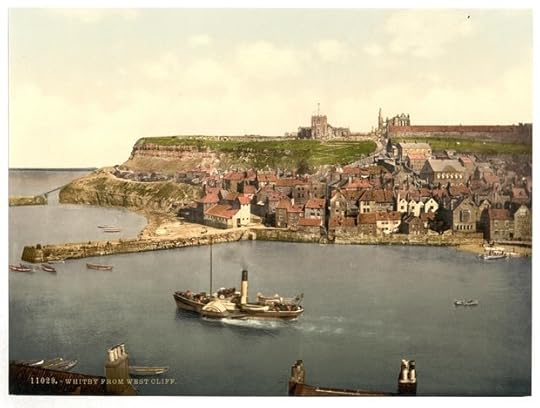
 In the library he also read the Whitby Gazette report from 1885 about the Russian schooner Dmitri of Navra which came into the harbour during a storm and was wrecked on the small beach called Tate Hill Sands. Stoker uses this story as Dracula’s arrival, changing the Dmitri from Navra to the Demeter from Varna. The following picture is by the famed Whitby photographer Frank Meadow Sutcliffe (Stoker bought a copy) and the next shot shows the same spot today. Again, very little has changed.
In the library he also read the Whitby Gazette report from 1885 about the Russian schooner Dmitri of Navra which came into the harbour during a storm and was wrecked on the small beach called Tate Hill Sands. Stoker uses this story as Dracula’s arrival, changing the Dmitri from Navra to the Demeter from Varna. The following picture is by the famed Whitby photographer Frank Meadow Sutcliffe (Stoker bought a copy) and the next shot shows the same spot today. Again, very little has changed.
 Stoker also heard many local legends which he wove into his story. One of these was the Barghest, a huge phantom hound with red eyes that haunts the North Yorkshire moors and cliffs around the fishing town. This was the inspiration for Dracula’s appearance as a large black dog which leaps from the Demeter and bounds up the famous 199 steps to St. Mary’s churchyard.
Stoker also heard many local legends which he wove into his story. One of these was the Barghest, a huge phantom hound with red eyes that haunts the North Yorkshire moors and cliffs around the fishing town. This was the inspiration for Dracula’s appearance as a large black dog which leaps from the Demeter and bounds up the famous 199 steps to St. Mary’s churchyard.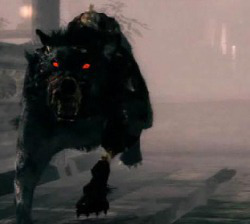 The book was published in 1897 and fans have been visiting these locations ever since, especially Whitby where the Goth weekends are now famous, or infamous, depending upon your point of view.
The book was published in 1897 and fans have been visiting these locations ever since, especially Whitby where the Goth weekends are now famous, or infamous, depending upon your point of view.
 Bram Stoker never visited Transylvania, but from 1894 he did holiday in Aberdeenshire on the eastern coast of Scotland, staying mostly at the Kilmarnock Arms Hotel in Cruden Bay. The first picture is the hotel in Stoker's time. Nothing much has changed.
Bram Stoker never visited Transylvania, but from 1894 he did holiday in Aberdeenshire on the eastern coast of Scotland, staying mostly at the Kilmarnock Arms Hotel in Cruden Bay. The first picture is the hotel in Stoker's time. Nothing much has changed.
 Isolated and windswept, Slains Castle stands on the headland above the village and Stoker was a guest here, following in the literary footsteps of Johnson and Boswell who stayed at the castle in 1773.
Isolated and windswept, Slains Castle stands on the headland above the village and Stoker was a guest here, following in the literary footsteps of Johnson and Boswell who stayed at the castle in 1773.
 Begun in 1597, the place is a curious hotchpotch of periods, the final 1837 remodelling being in the Scottish Baronial style. Slains was the inspiration for the Count’s castle at the head of the Borgo Pass, and Cruden Bay today’s residents refer to it as Castle Dracula. Now a romantic clifftop ruin, with many stone chambers and passageways to explore, it’s well worth a visit.
Begun in 1597, the place is a curious hotchpotch of periods, the final 1837 remodelling being in the Scottish Baronial style. Slains was the inspiration for the Count’s castle at the head of the Borgo Pass, and Cruden Bay today’s residents refer to it as Castle Dracula. Now a romantic clifftop ruin, with many stone chambers and passageways to explore, it’s well worth a visit. Whitby was the setting for many scenes in Dracula and Stoker first visited the small Yorkshire fishing town in 1890. He stayed for several weeks on the West Cliff’s Royal Crescent at number 6, a guesthouse run by Mrs. Emma Veazey. This is the cream-coloured house in the second picture. A plaque is now fixed to the wall and the place has been named Bram's View. The current owner lets out his rooms as a holiday flat.
Whitby was the setting for many scenes in Dracula and Stoker first visited the small Yorkshire fishing town in 1890. He stayed for several weeks on the West Cliff’s Royal Crescent at number 6, a guesthouse run by Mrs. Emma Veazey. This is the cream-coloured house in the second picture. A plaque is now fixed to the wall and the place has been named Bram's View. The current owner lets out his rooms as a holiday flat.

 This was the first of many visits to research and write Dracula. Three ladies from Hertford were fellow guests, Isabel and Marjorie Smith and their friend Miss Stokes, and many claim Stoker based the characters of Lucy, Mina, and Mrs Westenra on them. In the novel, these three characters also stay on the Crescent and Lucy’s bedroom is visited by a huge bat.Stoker carried out much of his research into East European folklore at Whitby library. He borrowed a 1820 book from here by William Wilkinson entitled: An Account of the Principalities of Wallachia and Moldavia. This is very probably where he first came across the name Dracula. A bench overlooks Whitby harbour where he would sit to write up his library notes and the view hasn’t changed since those Victorian days. The old postcard shows how it looked in his day, and the seat is now fitted with a commemorative plaque.
This was the first of many visits to research and write Dracula. Three ladies from Hertford were fellow guests, Isabel and Marjorie Smith and their friend Miss Stokes, and many claim Stoker based the characters of Lucy, Mina, and Mrs Westenra on them. In the novel, these three characters also stay on the Crescent and Lucy’s bedroom is visited by a huge bat.Stoker carried out much of his research into East European folklore at Whitby library. He borrowed a 1820 book from here by William Wilkinson entitled: An Account of the Principalities of Wallachia and Moldavia. This is very probably where he first came across the name Dracula. A bench overlooks Whitby harbour where he would sit to write up his library notes and the view hasn’t changed since those Victorian days. The old postcard shows how it looked in his day, and the seat is now fitted with a commemorative plaque.
 In the library he also read the Whitby Gazette report from 1885 about the Russian schooner Dmitri of Navra which came into the harbour during a storm and was wrecked on the small beach called Tate Hill Sands. Stoker uses this story as Dracula’s arrival, changing the Dmitri from Navra to the Demeter from Varna. The following picture is by the famed Whitby photographer Frank Meadow Sutcliffe (Stoker bought a copy) and the next shot shows the same spot today. Again, very little has changed.
In the library he also read the Whitby Gazette report from 1885 about the Russian schooner Dmitri of Navra which came into the harbour during a storm and was wrecked on the small beach called Tate Hill Sands. Stoker uses this story as Dracula’s arrival, changing the Dmitri from Navra to the Demeter from Varna. The following picture is by the famed Whitby photographer Frank Meadow Sutcliffe (Stoker bought a copy) and the next shot shows the same spot today. Again, very little has changed.
 Stoker also heard many local legends which he wove into his story. One of these was the Barghest, a huge phantom hound with red eyes that haunts the North Yorkshire moors and cliffs around the fishing town. This was the inspiration for Dracula’s appearance as a large black dog which leaps from the Demeter and bounds up the famous 199 steps to St. Mary’s churchyard.
Stoker also heard many local legends which he wove into his story. One of these was the Barghest, a huge phantom hound with red eyes that haunts the North Yorkshire moors and cliffs around the fishing town. This was the inspiration for Dracula’s appearance as a large black dog which leaps from the Demeter and bounds up the famous 199 steps to St. Mary’s churchyard. The book was published in 1897 and fans have been visiting these locations ever since, especially Whitby where the Goth weekends are now famous, or infamous, depending upon your point of view.
The book was published in 1897 and fans have been visiting these locations ever since, especially Whitby where the Goth weekends are now famous, or infamous, depending upon your point of view.
Published on October 07, 2016 08:07
August 13, 2016
CONJURING COINS
 The Enfield poltergeist case of 1977 has just made it to the big screen in the Conjuring 2. If you’ve seen the other horror films by James Wan, you can imagine how this director’s take on the famous haunting is a touch more sensational than the recent down to earth television dramatisation with Timothy Spall.As with the first Conjuring film, it follows the paranormal investigations of New England demonologists Ed and Lorraine Warren, played by Patrick Wilson and Vera Farmiga. The picture above shows Lorraine about to meet one of the Enfield entities. Fortunately, these demonic types didn't appear in the council house until the Warrens got there, as I can't imagine how Timothy Spall's character Maurice Grosse would have coped with them.Ed passed away in 2006, but the Warrens were the researchers who investigated Amityville and Lorraine is also the owner and ‘custodian’ of Annabelle, the possessed doll who starred in the 2014 film by the same name. After terrorising its owners, the doll was locked in a special cabinet in Lorraine’s occult museum in Monroe, Connecticut where its evil is contained and it can hopefully do no more harm.For some reason, the makers of the film didn’t feel the genuine Annabelle doll looked scary enough and decided upon a new design. I can’t think why.
The Enfield poltergeist case of 1977 has just made it to the big screen in the Conjuring 2. If you’ve seen the other horror films by James Wan, you can imagine how this director’s take on the famous haunting is a touch more sensational than the recent down to earth television dramatisation with Timothy Spall.As with the first Conjuring film, it follows the paranormal investigations of New England demonologists Ed and Lorraine Warren, played by Patrick Wilson and Vera Farmiga. The picture above shows Lorraine about to meet one of the Enfield entities. Fortunately, these demonic types didn't appear in the council house until the Warrens got there, as I can't imagine how Timothy Spall's character Maurice Grosse would have coped with them.Ed passed away in 2006, but the Warrens were the researchers who investigated Amityville and Lorraine is also the owner and ‘custodian’ of Annabelle, the possessed doll who starred in the 2014 film by the same name. After terrorising its owners, the doll was locked in a special cabinet in Lorraine’s occult museum in Monroe, Connecticut where its evil is contained and it can hopefully do no more harm.For some reason, the makers of the film didn’t feel the genuine Annabelle doll looked scary enough and decided upon a new design. I can’t think why. The only problem is the cabinet design, which has a sign saying: Positively Do Not Open. Unfortunately you can’t see the word Open until the door has been opened.
The only problem is the cabinet design, which has a sign saying: Positively Do Not Open. Unfortunately you can’t see the word Open until the door has been opened. I met Ed and Lorraine back in 1984 at the site of Borley Rectory on the Suffolk, Essex border. The pair arrived at the tiny village in a coach, leading a bunch of Americans on a paranormal journey of the British Isles. They’d taken their tour group around various UK haunted spots, such as York’s Treasury House, and Borley was the much anticipated highlight. After the rectory was demolished in 1944, the spirits naturally moved over the road to Borley Church and the tour group wandered quietly around the old building hoping for glimpses of phenomena.Lorraine and I talked at length about her interest in Borley and how on a previous visit, she’d witnessed an ‘apport’, a rare supernatural event where an object literally appears from nowhere. In this case it had been an old pre-decimal penny, an obvious sign from Harry Price, she claimed, who wrote books about the Borley hauntings. Harry and Lorraine were more or less on first name terms as she’d spoken to him psychically on several occasions.As we were chatting, one of her group, a young man, suddenly spotted a penny on the aisle carpet. Everyone agreed it hadn’t been there moments before, and picking it up, Lorraine felt the definite presence of Harry Price. If proof was needed, it was right there in the date of the coin – 1940, the year Price published his first book on the rectory, the Most Haunted House in England.
I met Ed and Lorraine back in 1984 at the site of Borley Rectory on the Suffolk, Essex border. The pair arrived at the tiny village in a coach, leading a bunch of Americans on a paranormal journey of the British Isles. They’d taken their tour group around various UK haunted spots, such as York’s Treasury House, and Borley was the much anticipated highlight. After the rectory was demolished in 1944, the spirits naturally moved over the road to Borley Church and the tour group wandered quietly around the old building hoping for glimpses of phenomena.Lorraine and I talked at length about her interest in Borley and how on a previous visit, she’d witnessed an ‘apport’, a rare supernatural event where an object literally appears from nowhere. In this case it had been an old pre-decimal penny, an obvious sign from Harry Price, she claimed, who wrote books about the Borley hauntings. Harry and Lorraine were more or less on first name terms as she’d spoken to him psychically on several occasions.As we were chatting, one of her group, a young man, suddenly spotted a penny on the aisle carpet. Everyone agreed it hadn’t been there moments before, and picking it up, Lorraine felt the definite presence of Harry Price. If proof was needed, it was right there in the date of the coin – 1940, the year Price published his first book on the rectory, the Most Haunted House in England. The picture shows Ed and Lorraine on either side of the guy who noticed the coin. The 'paranormal apport' now resides in Lorraine’s museum, close to the case containing the evil Annabelle.
The picture shows Ed and Lorraine on either side of the guy who noticed the coin. The 'paranormal apport' now resides in Lorraine’s museum, close to the case containing the evil Annabelle.
Published on August 13, 2016 08:08
July 13, 2016
'IS THERE ANYMONEY THERE?'
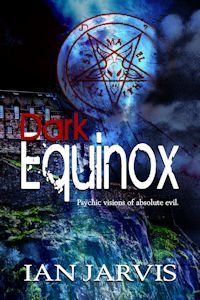 Simple advice for spirits when contacting the living through a medium.One of the central characters in my novel Dark Equinox is a fake clairvoyant who witnesses a crime one evening and realises he has a choice. Simply reporting the incident will make him a mundane eyewitness, anonymous and quickly forgotten, but passing the information to the police as psychic visions will take him down a different path, hopefully to the kind of fame enjoyed by television psychics such as Derek Acorah and Sally Morgan.Needless to say, he takes the latter route, but this got me thinking about genuine psychics and also how we should approach them after death. I’ve come up with a bit of simple advice for anyone thinking about contacting their loved ones in spirit form.
Simple advice for spirits when contacting the living through a medium.One of the central characters in my novel Dark Equinox is a fake clairvoyant who witnesses a crime one evening and realises he has a choice. Simply reporting the incident will make him a mundane eyewitness, anonymous and quickly forgotten, but passing the information to the police as psychic visions will take him down a different path, hopefully to the kind of fame enjoyed by television psychics such as Derek Acorah and Sally Morgan.Needless to say, he takes the latter route, but this got me thinking about genuine psychics and also how we should approach them after death. I’ve come up with a bit of simple advice for anyone thinking about contacting their loved ones in spirit form. If you’re terminally ill and your wife wants to talk to you after you’re dead, give some thought as to how you’ll introduce yourself. This is very important and prevents the medium from looking like a fake. She’ll probably visit a town hall, along with two-hundred other women, and pay someone like Stephen Holbrook £18 or more for a ‘show’ of two 45 minute slots.
If you’re terminally ill and your wife wants to talk to you after you’re dead, give some thought as to how you’ll introduce yourself. This is very important and prevents the medium from looking like a fake. She’ll probably visit a town hall, along with two-hundred other women, and pay someone like Stephen Holbrook £18 or more for a ‘show’ of two 45 minute slots. When you try to contact her through Stephen on stage, don’t just give him a letter…‘I have someone here beginning with M, or possibly N...’Why on earth would you do that? If you had no interest in word puzzles when you were alive, why start pissing about with them when you’re dead?Also, don’t just say: ‘it’s David’. What use is that without a surname? Telling his audience he has someone named David for an unspecified person, makes Stephen look like a fake who’s fishing. Tell him specifically who you want to contact, not that you're there to speak to 'someone'. He’ll connect you far quicker if you say:‘This is David Jessops for Amy Jessops sitting at the front there in the blue coat.’Yes, the location of your loved one is also important. It’s always good practise to tell the medium where they’re sitting...'The lady I want to speak to is Janet Matthews in the fawn raincoat by the door'.It saves Stephen having to vaguely indicate to half the auditorium, saying: ‘I have a David for someone in this right half of the room, or possibly the left.’ Again, this makes Stephen look like a fake who’s fishing, so DON’T do it.Once you get chatting with Stephen, you can mention someone in a uniform (all spirits seem to be very keen on this) and remember to make vague references to pets, a favourite song, and a faulty vehicle or household appliance. The good thing is, once you’re over the initial name hurdle, everything seems to flow just fine…‘He’s telling me how he loved his holidays on the coast. Where was it again?’‘Blackpool.’‘That’s right, Blackpool. He says you both loved it there, but oooh, do you remember that time it rained and how wet you both got? And he did like his fish and chips, didn’t he? He’s telling me how he always asked for scraps and told them to put plenty of salt and vinegar on. You remember that, don’t you? He says you had a favourite song that always reminded you both of Blackpool. He’s saying it was… It was…’‘Smile, by Lily Allen.’‘That’s right, Smile. And he’s saying that’s what you should always do when you hear it. You should smile and think of him. Hey, good times, lass, he’s saying.’The thing is, once you spirits start, it’s difficult to shut you up, but first you need to start and overcome that initial name hurdle. Remember to always give Stephen your name, not a letter, and most importantly, to give him your surname.If you can’t follow this simple and rather obvious advice, don’t worry too much. Neither can any of the other dead people who ‘connect’ with Stephen..
When you try to contact her through Stephen on stage, don’t just give him a letter…‘I have someone here beginning with M, or possibly N...’Why on earth would you do that? If you had no interest in word puzzles when you were alive, why start pissing about with them when you’re dead?Also, don’t just say: ‘it’s David’. What use is that without a surname? Telling his audience he has someone named David for an unspecified person, makes Stephen look like a fake who’s fishing. Tell him specifically who you want to contact, not that you're there to speak to 'someone'. He’ll connect you far quicker if you say:‘This is David Jessops for Amy Jessops sitting at the front there in the blue coat.’Yes, the location of your loved one is also important. It’s always good practise to tell the medium where they’re sitting...'The lady I want to speak to is Janet Matthews in the fawn raincoat by the door'.It saves Stephen having to vaguely indicate to half the auditorium, saying: ‘I have a David for someone in this right half of the room, or possibly the left.’ Again, this makes Stephen look like a fake who’s fishing, so DON’T do it.Once you get chatting with Stephen, you can mention someone in a uniform (all spirits seem to be very keen on this) and remember to make vague references to pets, a favourite song, and a faulty vehicle or household appliance. The good thing is, once you’re over the initial name hurdle, everything seems to flow just fine…‘He’s telling me how he loved his holidays on the coast. Where was it again?’‘Blackpool.’‘That’s right, Blackpool. He says you both loved it there, but oooh, do you remember that time it rained and how wet you both got? And he did like his fish and chips, didn’t he? He’s telling me how he always asked for scraps and told them to put plenty of salt and vinegar on. You remember that, don’t you? He says you had a favourite song that always reminded you both of Blackpool. He’s saying it was… It was…’‘Smile, by Lily Allen.’‘That’s right, Smile. And he’s saying that’s what you should always do when you hear it. You should smile and think of him. Hey, good times, lass, he’s saying.’The thing is, once you spirits start, it’s difficult to shut you up, but first you need to start and overcome that initial name hurdle. Remember to always give Stephen your name, not a letter, and most importantly, to give him your surname.If you can’t follow this simple and rather obvious advice, don’t worry too much. Neither can any of the other dead people who ‘connect’ with Stephen..
Published on July 13, 2016 11:37
June 24, 2016
Public Liability?
 All over Britain tonight, people will be arguing in pubs about how the vote should have gone. Whichever way you voted, none of this is your fault. The man in the street simply isn’t equipped to make such complex decisions. Both sides made dozens of superb points about remaining in the EU or leaving, and both sides destroyed those points with dozens of superb counter points. This happened again and again over the past months. The public aren’t political experts and, for many, this monumental decision eventually came down to who they liked (or disliked) most.Maybe leaving is the correct decision. Maybe it isn’t. if we’d studied European politics at university, become a politician and spent the past few years studying the EU situation and discussing it with other experts, we might have voted the right way. The problem is we didn’t do any of this and we pay people who ARE experts to decide these things for us. Don’t feel guilty, because it was never your job to negotiate this minefield. This was a supposedly critical decision, which could destroy Britain and has seemingly caused the British PM to resign, and yet it was left to the man in the street.We’re incapable of voting on the decimation of the NHS and the emergency services, the invasion of Muslim countries, and the spending of hundreds of billions on nuclear missiles to keep Britain a ‘nuclear power’. We were, however, allowed to decide on this, and now whatever happens, the man in the street is to blame. The super-rich elite wouldn’t be affected whichever way this vote went, but now they can raise oil prices, change bank and interest rates, and basically do whatever they like, while pointing at their public scapegoat and gleefully telling us we voted for it.
All over Britain tonight, people will be arguing in pubs about how the vote should have gone. Whichever way you voted, none of this is your fault. The man in the street simply isn’t equipped to make such complex decisions. Both sides made dozens of superb points about remaining in the EU or leaving, and both sides destroyed those points with dozens of superb counter points. This happened again and again over the past months. The public aren’t political experts and, for many, this monumental decision eventually came down to who they liked (or disliked) most.Maybe leaving is the correct decision. Maybe it isn’t. if we’d studied European politics at university, become a politician and spent the past few years studying the EU situation and discussing it with other experts, we might have voted the right way. The problem is we didn’t do any of this and we pay people who ARE experts to decide these things for us. Don’t feel guilty, because it was never your job to negotiate this minefield. This was a supposedly critical decision, which could destroy Britain and has seemingly caused the British PM to resign, and yet it was left to the man in the street.We’re incapable of voting on the decimation of the NHS and the emergency services, the invasion of Muslim countries, and the spending of hundreds of billions on nuclear missiles to keep Britain a ‘nuclear power’. We were, however, allowed to decide on this, and now whatever happens, the man in the street is to blame. The super-rich elite wouldn’t be affected whichever way this vote went, but now they can raise oil prices, change bank and interest rates, and basically do whatever they like, while pointing at their public scapegoat and gleefully telling us we voted for it.
Published on June 24, 2016 07:24
June 18, 2016
General Misconception
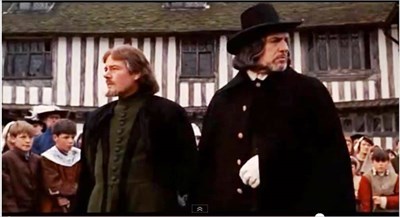 Inevitably they’re remaking the 1968 film Witchfinder General, or the Conqueror Worm, as it was known in the USA. Leaving aside the lack of imagination in endlessly churning out remakes, perhaps this new version will address an error in the original.Matthew Hopkins, East Anglia’s most notorious serial killer, was born around 1620 in Great Wenham, Suffolk. In the name of his benevolent God, he hung around 300 innocent women during the English Civil War, more than all the other witch killers combined of the past century.
Inevitably they’re remaking the 1968 film Witchfinder General, or the Conqueror Worm, as it was known in the USA. Leaving aside the lack of imagination in endlessly churning out remakes, perhaps this new version will address an error in the original.Matthew Hopkins, East Anglia’s most notorious serial killer, was born around 1620 in Great Wenham, Suffolk. In the name of his benevolent God, he hung around 300 innocent women during the English Civil War, more than all the other witch killers combined of the past century. In the early 1640s, he used inheritance money to buy the Thorn Inn in the village of Mistley, where many of his witch trials were held. The present inn was built in 1723 on the foundations and cellars of this.
In the early 1640s, he used inheritance money to buy the Thorn Inn in the village of Mistley, where many of his witch trials were held. The present inn was built in 1723 on the foundations and cellars of this. A plaque on the wall tells of the atrocities carried out there.
A plaque on the wall tells of the atrocities carried out there. Whenever people think of Hopkins, they usually picture Vincent Price, star of the 1968 film. This is understandable as, apart from ancient woodcut prints, which may as well have been drawn by a six-year-old, this mature look is the only image we have to go on. The ludicrous title Hopkins gave himself also fools us into thinking of an older man; General is a high rank and the holders, such as Eisenhower and Patton, are inevitably getting on a bit.Brilliant as he was in the part, however, Vincent Price looked nothing like Matthew Hopkins. He was 57 when he starred in the role and, surprisingly, most of the Witchfinder’s killings took place before he was 25. Like Jim Morrison and many other music stars, Hopkins died at 27, probably of tuberculosis.He’s buried in Mistley churchyard, but I wasted thirty minutes searching before a clergyman helped me out. He lies in an unmarked grave.
Whenever people think of Hopkins, they usually picture Vincent Price, star of the 1968 film. This is understandable as, apart from ancient woodcut prints, which may as well have been drawn by a six-year-old, this mature look is the only image we have to go on. The ludicrous title Hopkins gave himself also fools us into thinking of an older man; General is a high rank and the holders, such as Eisenhower and Patton, are inevitably getting on a bit.Brilliant as he was in the part, however, Vincent Price looked nothing like Matthew Hopkins. He was 57 when he starred in the role and, surprisingly, most of the Witchfinder’s killings took place before he was 25. Like Jim Morrison and many other music stars, Hopkins died at 27, probably of tuberculosis.He’s buried in Mistley churchyard, but I wasted thirty minutes searching before a clergyman helped me out. He lies in an unmarked grave.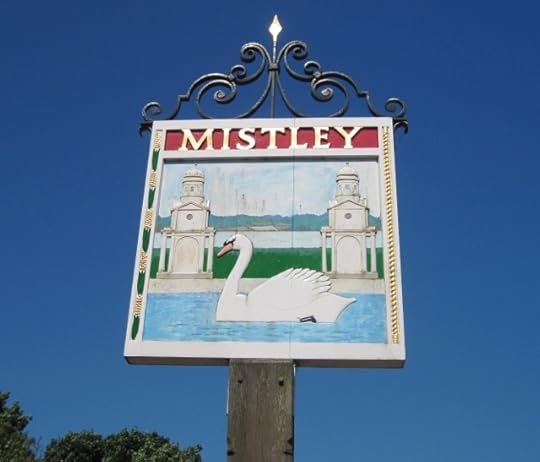
 Maybe the new version of Witchfinder General will address the age issue and cast someone more appropriate, like Justin Bieber.Lavenham in Suffolk, where witch killings took place. Little has changed in the village and many scenes from Witchfinder General were filmed there.
Maybe the new version of Witchfinder General will address the age issue and cast someone more appropriate, like Justin Bieber.Lavenham in Suffolk, where witch killings took place. Little has changed in the village and many scenes from Witchfinder General were filmed there.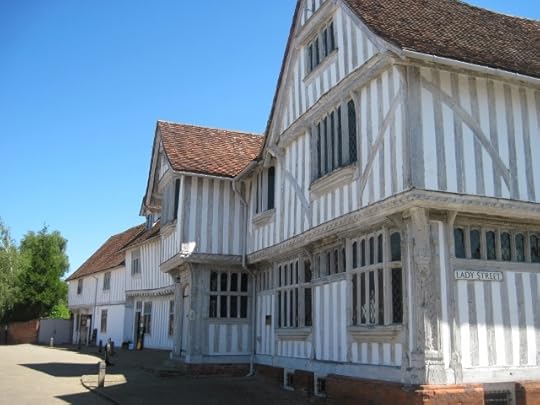

Published on June 18, 2016 07:44
June 2, 2016
ROCK STAR CONDUCTS WEREWOLF HUNT
Alice Cooper asked a question on his Facebook page concerning the recent Yorkshire werewolf sightings - 'So there are suddenly several reports of a werewolf like creature near a small town in the UK. Do you think it could be real?'Always careful to get their facts straight, the Daily Mirror translated that simple query into the headline: ROCK LEGEND ALICE COOPER LAUNCHES HUNT FOR MASSIVE WEREWOLF RUNNING FREE IN HULL.The Sun ‘newspaper’ went with: WEREWOLF NOT WORTHY. ROCK LEGEND ALICE COOPER JOINS THE HUNT FOR A SUPPOSED MYTHICAL BEAST IN HULL. SCHOOL’S OUT SINGER IS OUT TO CATCH 8ft CREATURE.Needless to say, Alice won’t be conducting any werewolf hunts or going within a hundred miles of the Yorkshire Wolds. He probably doesn’t even remember mentioning the creature, but some odd people are definitely searching for it and over summer we can look forward to the tabloids printing their sensational stories and shite blurred pictures of dogs. Here’s what they’re looking for. As you can see, werewolves may devour your children and tear you apart, but at least they have the common decency to wear trousers. This should have stayed a local tongue-in-cheek story, similar to UNEMPLOYED FAMILY DEMAND COUNCIL REHOUSE THEM AS HOUSE IS INFESTED WITH DEMONS. It would have soon faded away, but with celebrities like Alice Cooper boosting it, this werewolf flap is gearing up to emulate the Beast of Bodmin Moor, the huge panther that was terrorising Devon and Cornwall back in the eighties. Even the Royal Marines were armed and sent out on night patrols looking for THAT beast.
This should have stayed a local tongue-in-cheek story, similar to UNEMPLOYED FAMILY DEMAND COUNCIL REHOUSE THEM AS HOUSE IS INFESTED WITH DEMONS. It would have soon faded away, but with celebrities like Alice Cooper boosting it, this werewolf flap is gearing up to emulate the Beast of Bodmin Moor, the huge panther that was terrorising Devon and Cornwall back in the eighties. Even the Royal Marines were armed and sent out on night patrols looking for THAT beast.
 Perhaps the military will be involved here too, and dispatched to Barmston Drain on the next full moon like in the horror movie Dog Soldiers. Here are a couple of pictures taken on Bodmin Moor at the time showing dangerous big cats, or maybe cats.
Perhaps the military will be involved here too, and dispatched to Barmston Drain on the next full moon like in the horror movie Dog Soldiers. Here are a couple of pictures taken on Bodmin Moor at the time showing dangerous big cats, or maybe cats.
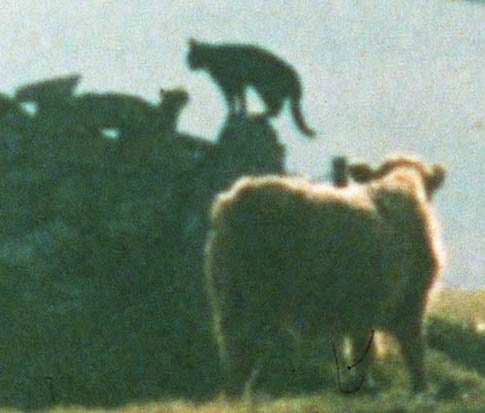 One of the tabloids, possibly the Express, offered a large cash prize for conclusive photo evidence of the Bodmin Beast, and hoping to claim the money, I travelled to the moors with my friend Ray Sherwin in 1984. We set up camp in an isolated area with a high number of panther sightings and dead livestock. Ray was, and still is, an expert on aromatics and pheromones, and the plan was to lure the creature with feline scent and film it with his video equipment. I’m afraid we failed, partly because we couldn’t get the pheromones right, but mostly because there’s no such thing as the Beast of Bodmin Moor. Our Loch Ness, Cottingley Dell, and Borley Rectory expeditions weren't too successful either, and I could be wrong, but I’ll wager the people currently searching in the Yorkshire Wolds won’t find any werewolves. Beware the moon.
One of the tabloids, possibly the Express, offered a large cash prize for conclusive photo evidence of the Bodmin Beast, and hoping to claim the money, I travelled to the moors with my friend Ray Sherwin in 1984. We set up camp in an isolated area with a high number of panther sightings and dead livestock. Ray was, and still is, an expert on aromatics and pheromones, and the plan was to lure the creature with feline scent and film it with his video equipment. I’m afraid we failed, partly because we couldn’t get the pheromones right, but mostly because there’s no such thing as the Beast of Bodmin Moor. Our Loch Ness, Cottingley Dell, and Borley Rectory expeditions weren't too successful either, and I could be wrong, but I’ll wager the people currently searching in the Yorkshire Wolds won’t find any werewolves. Beware the moon.
 This should have stayed a local tongue-in-cheek story, similar to UNEMPLOYED FAMILY DEMAND COUNCIL REHOUSE THEM AS HOUSE IS INFESTED WITH DEMONS. It would have soon faded away, but with celebrities like Alice Cooper boosting it, this werewolf flap is gearing up to emulate the Beast of Bodmin Moor, the huge panther that was terrorising Devon and Cornwall back in the eighties. Even the Royal Marines were armed and sent out on night patrols looking for THAT beast.
This should have stayed a local tongue-in-cheek story, similar to UNEMPLOYED FAMILY DEMAND COUNCIL REHOUSE THEM AS HOUSE IS INFESTED WITH DEMONS. It would have soon faded away, but with celebrities like Alice Cooper boosting it, this werewolf flap is gearing up to emulate the Beast of Bodmin Moor, the huge panther that was terrorising Devon and Cornwall back in the eighties. Even the Royal Marines were armed and sent out on night patrols looking for THAT beast.
 Perhaps the military will be involved here too, and dispatched to Barmston Drain on the next full moon like in the horror movie Dog Soldiers. Here are a couple of pictures taken on Bodmin Moor at the time showing dangerous big cats, or maybe cats.
Perhaps the military will be involved here too, and dispatched to Barmston Drain on the next full moon like in the horror movie Dog Soldiers. Here are a couple of pictures taken on Bodmin Moor at the time showing dangerous big cats, or maybe cats.
 One of the tabloids, possibly the Express, offered a large cash prize for conclusive photo evidence of the Bodmin Beast, and hoping to claim the money, I travelled to the moors with my friend Ray Sherwin in 1984. We set up camp in an isolated area with a high number of panther sightings and dead livestock. Ray was, and still is, an expert on aromatics and pheromones, and the plan was to lure the creature with feline scent and film it with his video equipment. I’m afraid we failed, partly because we couldn’t get the pheromones right, but mostly because there’s no such thing as the Beast of Bodmin Moor. Our Loch Ness, Cottingley Dell, and Borley Rectory expeditions weren't too successful either, and I could be wrong, but I’ll wager the people currently searching in the Yorkshire Wolds won’t find any werewolves. Beware the moon.
One of the tabloids, possibly the Express, offered a large cash prize for conclusive photo evidence of the Bodmin Beast, and hoping to claim the money, I travelled to the moors with my friend Ray Sherwin in 1984. We set up camp in an isolated area with a high number of panther sightings and dead livestock. Ray was, and still is, an expert on aromatics and pheromones, and the plan was to lure the creature with feline scent and film it with his video equipment. I’m afraid we failed, partly because we couldn’t get the pheromones right, but mostly because there’s no such thing as the Beast of Bodmin Moor. Our Loch Ness, Cottingley Dell, and Borley Rectory expeditions weren't too successful either, and I could be wrong, but I’ll wager the people currently searching in the Yorkshire Wolds won’t find any werewolves. Beware the moon.
Published on June 02, 2016 11:23
May 28, 2016
Genuine Werewolves in Yorkshire
For this first blog I thought I’d talk about the huge werewolf that’s currently terrorising the Yorkshire Wolds, mostly because supernatural creatures in this area are the subject of my book Cat Flap. Some people scoff at the paranormal, but not any longer. Reports of a genuine 8ft werewolf were recently published in the local papers and then the British tabloids. People have seen the monster running around and eating Alsatian dogs near the rural waterway known as Barmston Drain near the market town of Beverley. Apparently the Wolds are notorious for werewolf sightings and Barmston isn’t far from me. During the next full moon I’ll be heading there with my camera at dusk and I’ll post any lupine evidence here in this blog. How hard can it be? This werewolf is just one of many that have been reported near here over the centuries. It looks as if supernatural creatures have a liking for York and the Yorkshire Wolds, Flixton, north of Scarborough, being a notorious spot. A coach was attacked there in 1800 and in the 1970s a werewolf tried to smash its way through the windscreen of a truck.During my research, I came across this medieval woodcut print from the British Museum. The Yorkshire wolf here is depicted in human form, with his wife at the door yelling: 'Your dinner's almost ready. What the hell have I told you about snacking between meals?'
This werewolf is just one of many that have been reported near here over the centuries. It looks as if supernatural creatures have a liking for York and the Yorkshire Wolds, Flixton, north of Scarborough, being a notorious spot. A coach was attacked there in 1800 and in the 1970s a werewolf tried to smash its way through the windscreen of a truck.During my research, I came across this medieval woodcut print from the British Museum. The Yorkshire wolf here is depicted in human form, with his wife at the door yelling: 'Your dinner's almost ready. What the hell have I told you about snacking between meals?' There’s also this 1858 painting by Maurice Sand entitled Werewolves. Is it just me, or do these characters look like prostitutes waiting for kerb crawlers and other 'passing trade' in the red light area of town? I don't imagine they'd do much business. Imagine one of these leaning into your car window like Julia Roberts in Pretty Woman.
There’s also this 1858 painting by Maurice Sand entitled Werewolves. Is it just me, or do these characters look like prostitutes waiting for kerb crawlers and other 'passing trade' in the red light area of town? I don't imagine they'd do much business. Imagine one of these leaning into your car window like Julia Roberts in Pretty Woman. The only thing that has me questioning the validity of these recent news stories is the way all the ‘witnesses’ are constantly referred to as ‘a woman said’ or ‘a local claimed’.Well, that and the 8ft werewolf.
The only thing that has me questioning the validity of these recent news stories is the way all the ‘witnesses’ are constantly referred to as ‘a woman said’ or ‘a local claimed’.Well, that and the 8ft werewolf.
 This werewolf is just one of many that have been reported near here over the centuries. It looks as if supernatural creatures have a liking for York and the Yorkshire Wolds, Flixton, north of Scarborough, being a notorious spot. A coach was attacked there in 1800 and in the 1970s a werewolf tried to smash its way through the windscreen of a truck.During my research, I came across this medieval woodcut print from the British Museum. The Yorkshire wolf here is depicted in human form, with his wife at the door yelling: 'Your dinner's almost ready. What the hell have I told you about snacking between meals?'
This werewolf is just one of many that have been reported near here over the centuries. It looks as if supernatural creatures have a liking for York and the Yorkshire Wolds, Flixton, north of Scarborough, being a notorious spot. A coach was attacked there in 1800 and in the 1970s a werewolf tried to smash its way through the windscreen of a truck.During my research, I came across this medieval woodcut print from the British Museum. The Yorkshire wolf here is depicted in human form, with his wife at the door yelling: 'Your dinner's almost ready. What the hell have I told you about snacking between meals?' There’s also this 1858 painting by Maurice Sand entitled Werewolves. Is it just me, or do these characters look like prostitutes waiting for kerb crawlers and other 'passing trade' in the red light area of town? I don't imagine they'd do much business. Imagine one of these leaning into your car window like Julia Roberts in Pretty Woman.
There’s also this 1858 painting by Maurice Sand entitled Werewolves. Is it just me, or do these characters look like prostitutes waiting for kerb crawlers and other 'passing trade' in the red light area of town? I don't imagine they'd do much business. Imagine one of these leaning into your car window like Julia Roberts in Pretty Woman. The only thing that has me questioning the validity of these recent news stories is the way all the ‘witnesses’ are constantly referred to as ‘a woman said’ or ‘a local claimed’.Well, that and the 8ft werewolf.
The only thing that has me questioning the validity of these recent news stories is the way all the ‘witnesses’ are constantly referred to as ‘a woman said’ or ‘a local claimed’.Well, that and the 8ft werewolf.
Published on May 28, 2016 08:09



